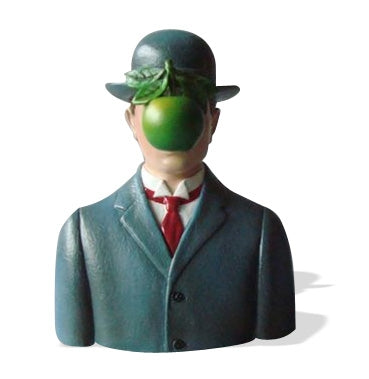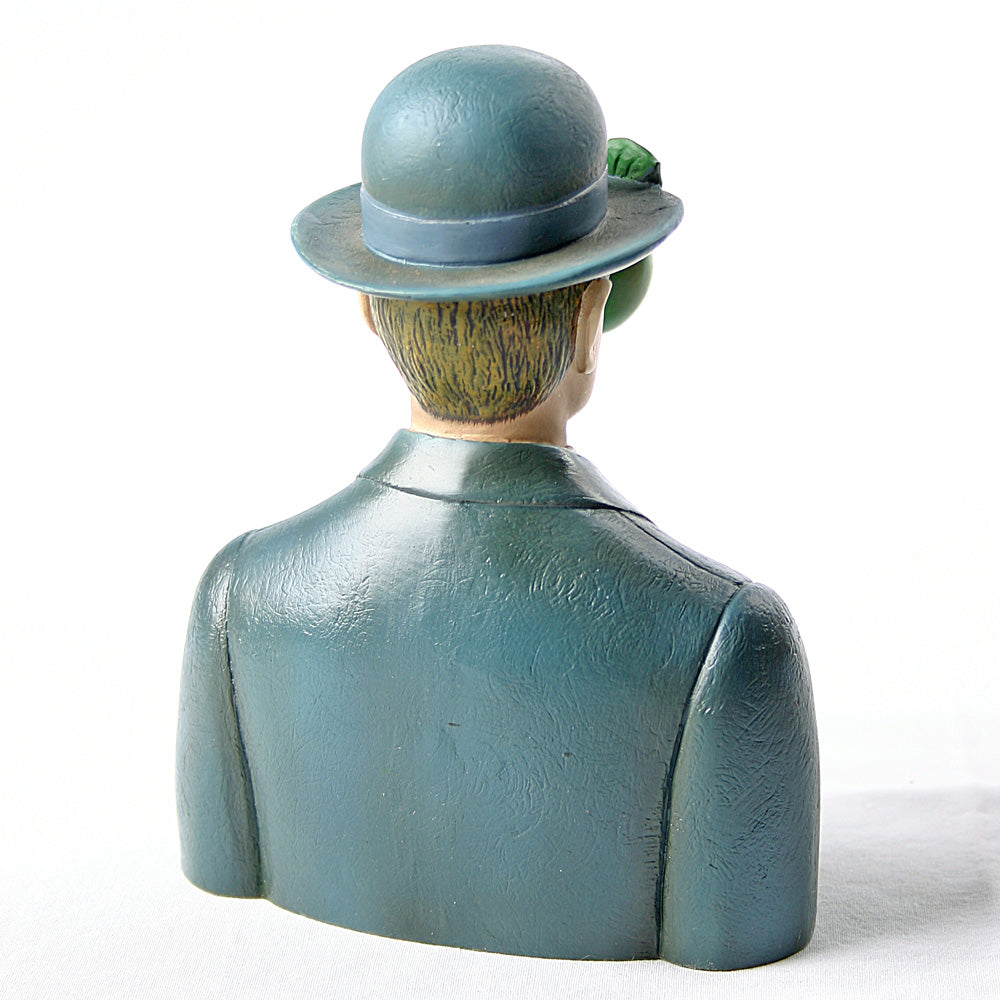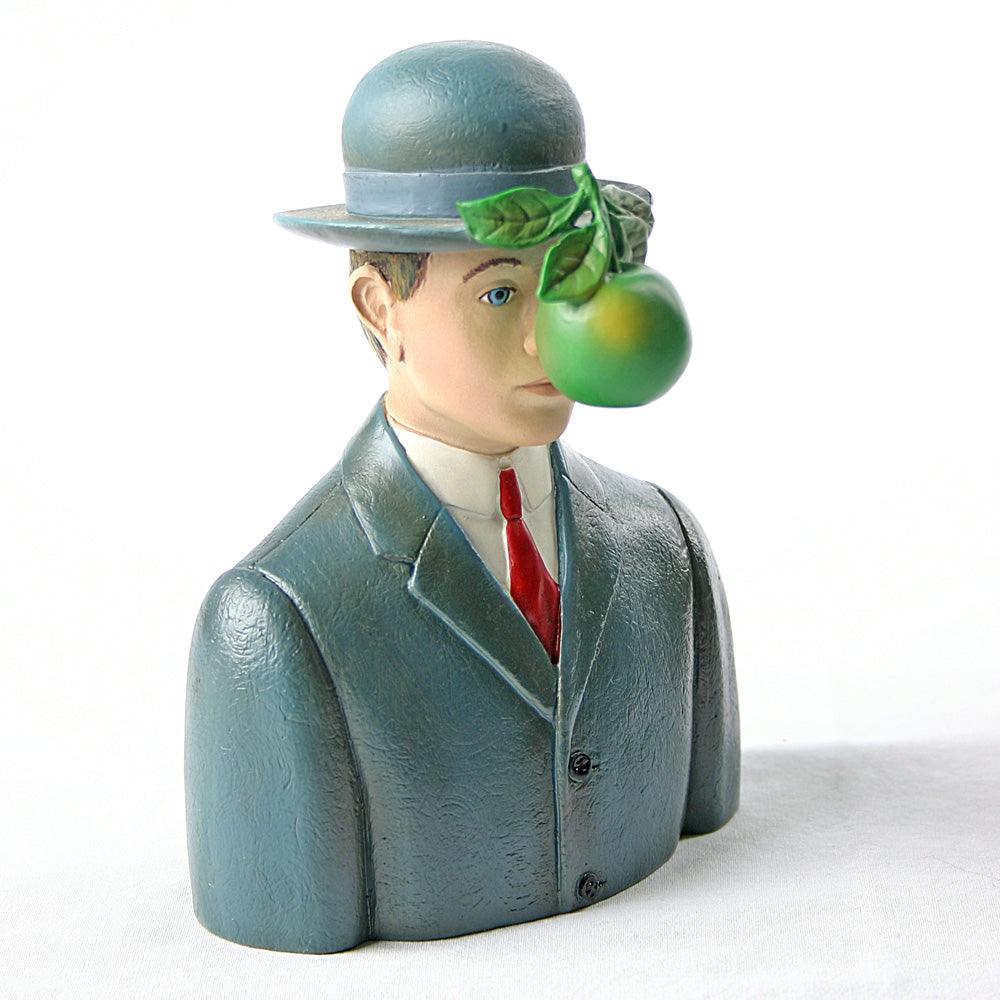1
/
of
3
Parastone
Son of Man Wearing Bowler Hat by Magritte
Son of Man Wearing Bowler Hat by Magritte
SKU:MAG01
Regular price
$67.25 USD
Regular price
Sale price
$67.25 USD
Unit price
/
per
Shipping calculated at checkout.
In stock
Couldn't load pickup availability
Item Specifics
Item Specifics
- Dimensions (in): 5.25"H x 4.25"W x 3"D
- Weight: 1 lb
- Material: resin, color details
- Item type: Magritte Statue
- UPC or EAN: 8718375750261
The Son of Man (Le Fils de l'homme, Oil on canvas, 116x89 cm)
This work was commissioned by Harry Torczyner in the summer of 1963 and delivered to him in August 1964. He had asked Magritte to do a self portrait in the spirit of self portraits by two Flemish painters, Rubens and Ensor, in which the artists wear hats. The title of this work was found by Irene Hamoir, a Belgian poet and an important member of the Belgian surrealist movement.
Rene Magritte (1898-1967)was born in Lessines near Tournai in French speaking Belgium in 1898. He spent his childhood in Chatelet and Charleroi. He attended the Academie des Beaux-Arts in Brussels from 1916 to 1918. There he met the brothers Victor and Pierre Bourgeois and the painter Pierre-Louis Flouquet. In 1919 Magritte contributed to the first issue of the review Au Volant published by the Bourgeois brothers. After a year of military service he worked as a designer, first of all for a wallpaper manufacturer in Brussels and then as a freelance designer of posters, publicity materials and exhibition stands. He painted his first acclaimed Surrealist painting, The Last Jockey, in 1926 and in the same year, along with the other Belgian surrealists, signed the declamatory leaflets Two Disgraces and the Married Couple of the Eiffel Tower. Between 1927 and 1930 Magritte lived in Le Perreux-sur-Marne near Paris, during which time he became acquainted with Hans Arp, Andre Breton, Salvador Dali, Paul Eluard and Joan Miro. Magritte's provocative essay Words and Pictures was published in the last issue of La Revolution Surrealiste in 1929, a year after he painted The Empty Mask.
Part of the Parastone Museum Collection of statues adapted from famous paintings. Comes with color description card.
This work was commissioned by Harry Torczyner in the summer of 1963 and delivered to him in August 1964. He had asked Magritte to do a self portrait in the spirit of self portraits by two Flemish painters, Rubens and Ensor, in which the artists wear hats. The title of this work was found by Irene Hamoir, a Belgian poet and an important member of the Belgian surrealist movement.
Rene Magritte (1898-1967)was born in Lessines near Tournai in French speaking Belgium in 1898. He spent his childhood in Chatelet and Charleroi. He attended the Academie des Beaux-Arts in Brussels from 1916 to 1918. There he met the brothers Victor and Pierre Bourgeois and the painter Pierre-Louis Flouquet. In 1919 Magritte contributed to the first issue of the review Au Volant published by the Bourgeois brothers. After a year of military service he worked as a designer, first of all for a wallpaper manufacturer in Brussels and then as a freelance designer of posters, publicity materials and exhibition stands. He painted his first acclaimed Surrealist painting, The Last Jockey, in 1926 and in the same year, along with the other Belgian surrealists, signed the declamatory leaflets Two Disgraces and the Married Couple of the Eiffel Tower. Between 1927 and 1930 Magritte lived in Le Perreux-sur-Marne near Paris, during which time he became acquainted with Hans Arp, Andre Breton, Salvador Dali, Paul Eluard and Joan Miro. Magritte's provocative essay Words and Pictures was published in the last issue of La Revolution Surrealiste in 1929, a year after he painted The Empty Mask.
Part of the Parastone Museum Collection of statues adapted from famous paintings. Comes with color description card.
Share






